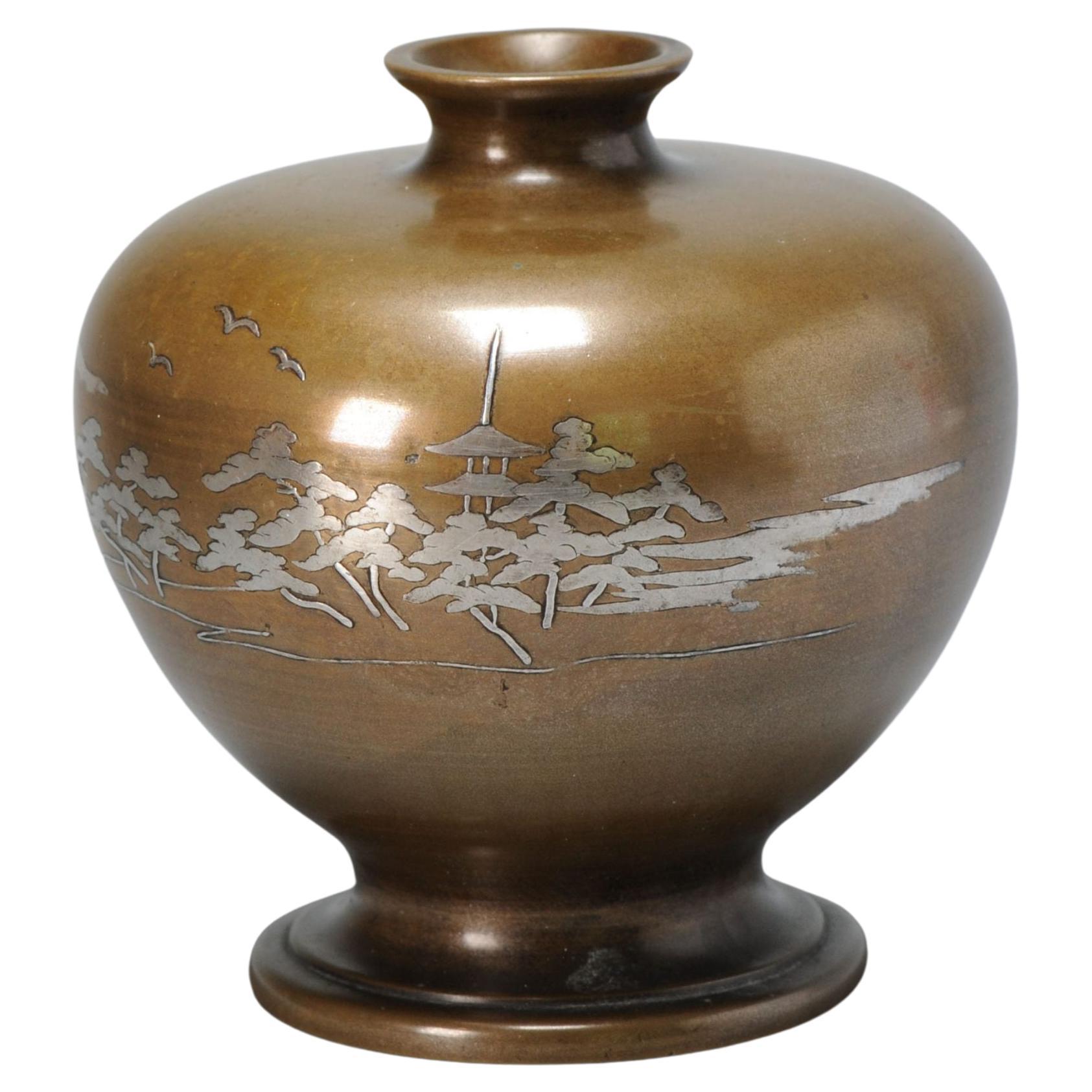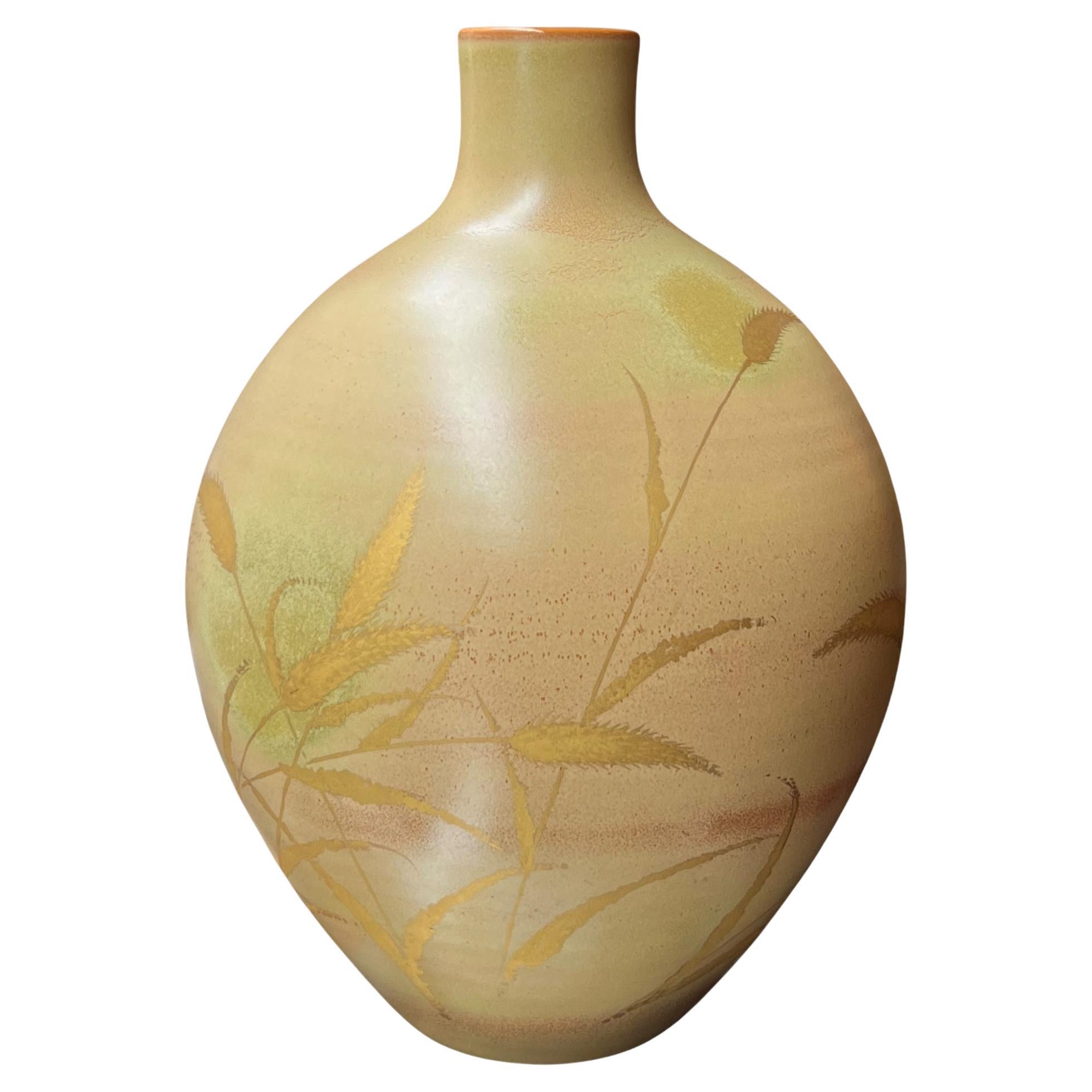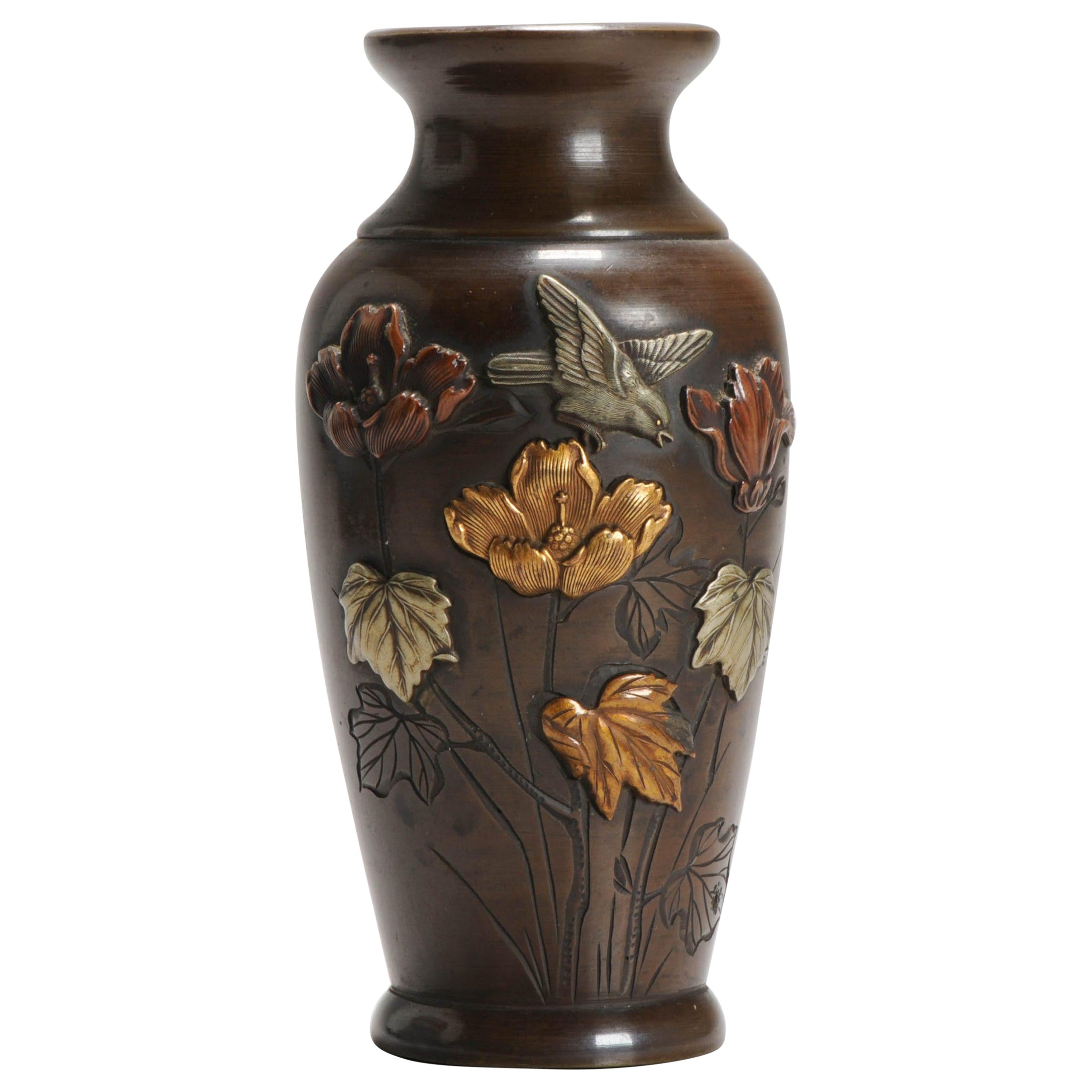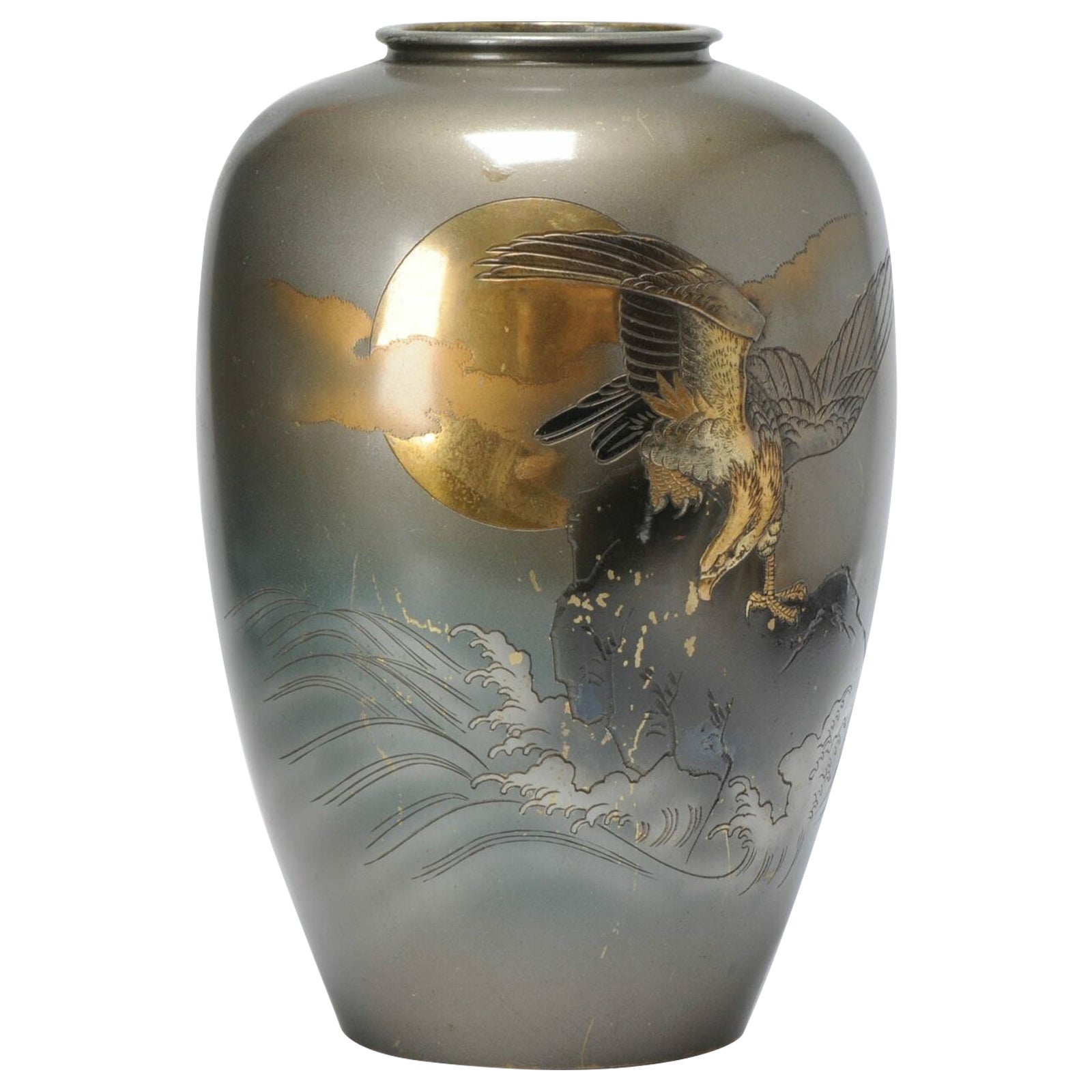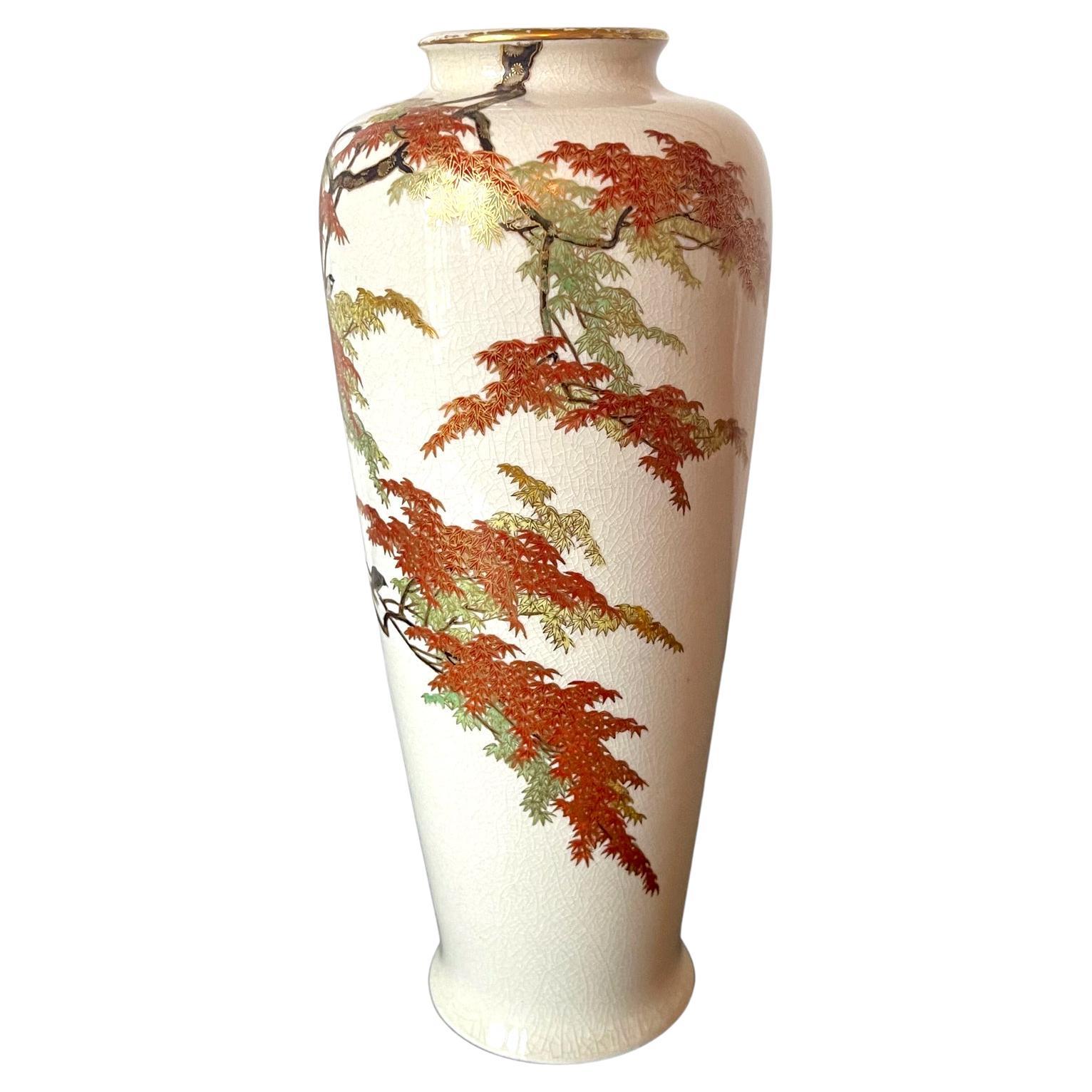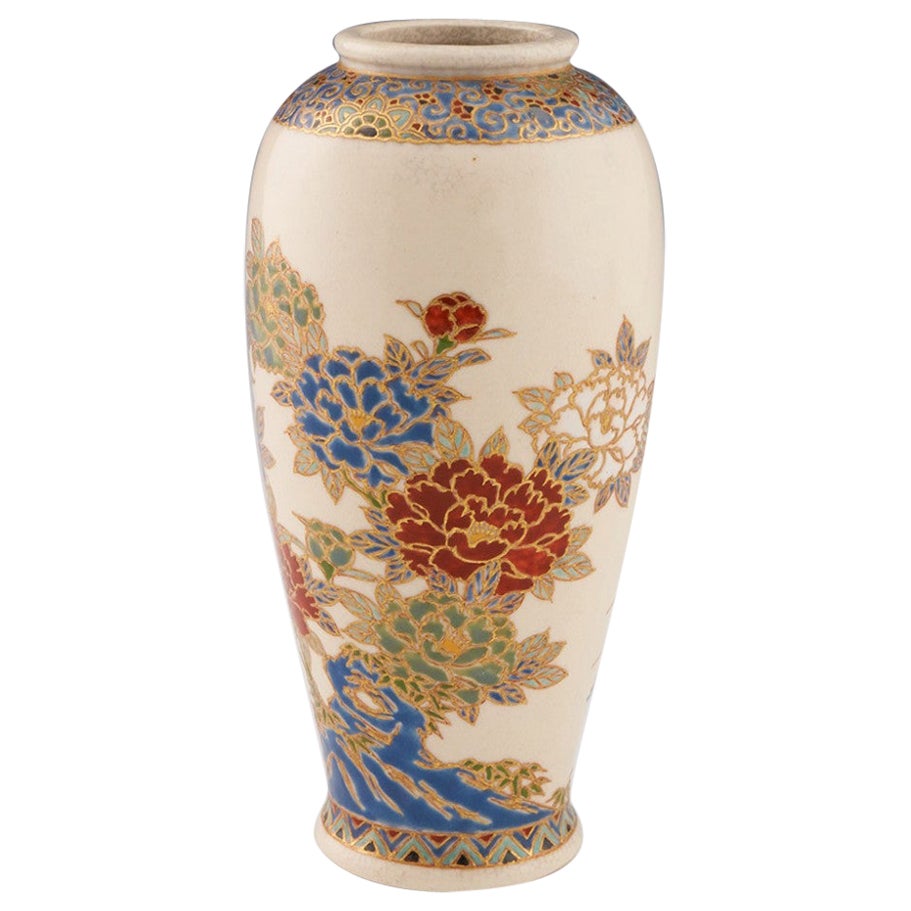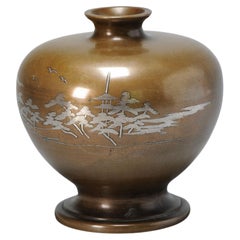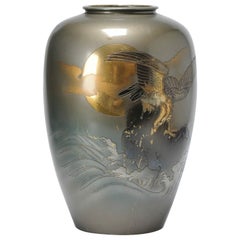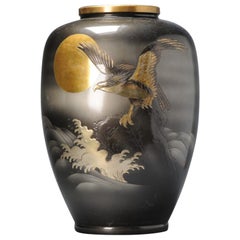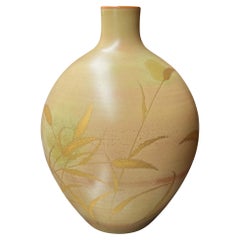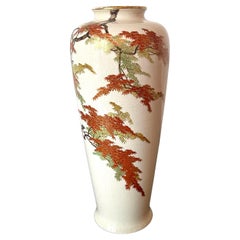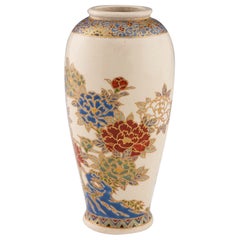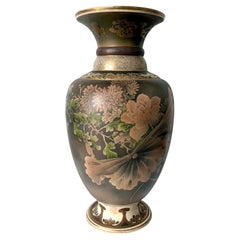Items Similar to Shibuichi Vase in Lovely Shape, Landscape, Meiji (1868-1912) Era, Early 20th C
Want more images or videos?
Request additional images or videos from the seller
1 of 5
Shibuichi Vase in Lovely Shape, Landscape, Meiji (1868-1912) Era, Early 20th C
$1,830.40
$2,28820% Off
£1,377.21
£1,721.5120% Off
�€1,590.70
€1,988.3820% Off
CA$2,586.83
CA$3,233.5420% Off
A$2,807.11
A$3,508.8920% Off
CHF 1,487.52
CHF 1,859.4020% Off
MX$34,427.81
MX$43,034.7720% Off
NOK 18,407.95
NOK 23,009.9420% Off
SEK 17,394.54
SEK 21,743.1820% Off
DKK 11,875.38
DKK 14,844.2320% Off
About the Item
Japan, silver inlaid bronze vase, Meiji period (1868-1912), the bulbous vase inlaid with a temple in a landscape,
Additional information:
Material: Bronze & Cloisonne
Region of Origin: Japan
Period: 19th century Meiji Periode (1867-1912)
Age: ca 1900
Original/Reproduction: Original
Condition: no real damages found, just a small process flaw in base and some ware
Dimension: 12 Dia x 13 H cm
- Dimensions:Height: 5.12 in (13 cm)Diameter: 4.73 in (12 cm)
- Materials and Techniques:
- Place of Origin:
- Period:
- Date of Manufacture:Early 20th Century
- Condition:No real damages found, just a small process flaw in base and some ware.
- Seller Location:Amsterdam, NL
- Reference Number:Seller: 1446374236941stDibs: LU4863236167442
About the Seller
5.0
Gold Seller
Premium sellers maintaining a 4.3+ rating and 24-hour response times
Established in 2015
1stDibs seller since 2019
269 sales on 1stDibs
Typical response time: 6 hours
- ShippingRetrieving quote...Shipping from: Amsterdam, Netherlands
- Return Policy
Authenticity Guarantee
In the unlikely event there’s an issue with an item’s authenticity, contact us within 1 year for a full refund. DetailsMoney-Back Guarantee
If your item is not as described, is damaged in transit, or does not arrive, contact us within 7 days for a full refund. Details24-Hour Cancellation
You have a 24-hour grace period in which to reconsider your purchase, with no questions asked.Vetted Professional Sellers
Our world-class sellers must adhere to strict standards for service and quality, maintaining the integrity of our listings.Price-Match Guarantee
If you find that a seller listed the same item for a lower price elsewhere, we’ll match it.Trusted Global Delivery
Our best-in-class carrier network provides specialized shipping options worldwide, including custom delivery.More From This Seller
View AllInlaid Shibuichi Vase in Lovely Shape, Landscape, Meiji Era
Located in Amsterdam, Noord Holland
Japan, silver inlaid bronze vase, Meiji period (1868-1912), the bulbous vase inlaid with a temple in a landscape,
28-6-22-1-12
Condition
no real damages found, just a small pr...
Category
Antique 19th Century Japanese Qing Ceramics
Materials
Porcelain
$2,585 Sale Price
20% Off
An Inlaid Shibuichi Vase in Lovely Shape Landscape Meiji Kyoto, 19th Century
Located in Amsterdam, Noord Holland
Meiji Period (1868-1912), Japan
A small vase with an inlaid scene of a bird and flowers in a garden.
Additional information:
Material: Bronze & Cloisonne
Region of Origin: Japan
Pe...
Category
Antique 19th Century Japanese Meiji Vases
Materials
Bronze
An Inlaid Shibuichi Ovoid Vase by Seifu, Meiji or Taisho Era, Early 20th Century
Located in Amsterdam, Noord Holland
The front of the body engraved and inlaid in flat relief of gilt with an eagle perched on a wave-lashed rock, its wings outspread as it prepares for flight; signed on the reverse wit...
Category
Early 20th Century Japanese Vases
Materials
Porcelain
$3,149 Sale Price / set
20% Off
An inlaid Shibuichi Ovoid Vase by Seifu, Meiji or Taisho era, Early 20th Century
Located in Amsterdam, Noord Holland
Introducing an exceptional Japanese Shibuichi vase from the early 20th century, adorned with a striking scene of a magnificent bird of prey. The vase bears the Seifu mark on the side...
Category
Antique 19th Century Japanese Vases
Materials
Porcelain
$3,149 Sale Price
20% Off
Japanese Satsuma Vase Landscape Figural Decoration Marked, 19th Century
Located in Amsterdam, Noord Holland
Fabulous Japanese earthenware Satsuma Vase with nice decoration of a landscape with figures. Meiji period, 19th c.
Lovely piece.
Additional information:
Material: Porcelain & Potte...
Category
Antique 19th Century Japanese Meiji Vases
Materials
Porcelain
Rare Japanese Porcelain Antique Vase Marked Hichozan, 19th Century
Located in Amsterdam, Noord Holland
A beautiful and unsual Japanese Porcelain vase, decorated with flying ducks in a landscape on blue ground, floral decorative band at the top, marked with a nine character mark on the...
Category
Antique 19th Century Japanese Vases
Materials
Porcelain
$6,878 Sale Price
20% Off
You May Also Like
Japan, Porcelain vase by Inoue Haruo 1910- 1975
Located in PARIS, FR
This porcelain vase, created by Inoue Haruo, embodies the elegance and finesse of Kyoto ceramics. Its spherical shape softened by harmonious curves, is topped with a slightly flared ...
Category
Mid-20th Century Japanese Vases
Materials
Porcelain
Japanese Satsuma Vase Yabu Meizan Meiji
By Yabu Meizan
Located in Atlanta, GA
A Satsuma baluster form vase from the studio of Yabu Meizan (birth name Yabu Masashichi; 1853-1934), who is one of the most celebrated and collectible Satsuma artists from Meiji Peri...
Category
Early 20th Century Japanese Meiji Ceramics
Materials
Ceramic
Japanese Meji Period Satsuma Vase c1885
Located in Tunbridge Wells, GB
Heading : Japanese Meji period satsuma vase
Date : c1885
Origin : Japan - possibly Satsuma province although most likely decorated in Kobe or Yokohama.
Bowl Features : Imari palette ...
Category
Antique 1880s Japanese Porcelain
Materials
Porcelain
Large Japanese Satsuma Ceramic Vase Kinkozan
By Kinkozan
Located in Atlanta, GA
A large Japanese ceramic vase from the end of Meiji period circa 1890-1910s by Kinkozan (1645-1927). One of the largest studio manufacturers of the export ceramics at the time based in Kyoto. In the typical style of satsuma made at the turn of 20th century, the vase is elaborately decorated with a rather unusual kinran-de (gold paint) and green enamel highlight on a mottled brown background. The painterly decoration depicts a large seasonal floral arrangement in a circular fashion. Besides the obviously superb craftsmanship, what sets this particular vase apart from many lower quality and mass-produced pieces is its tone-on-tone color pallet that is visually somber and the small and sensitive details that heralds the change of the seasons. When the viewer goes beyond the first casual glimpse of the blossom and foliage, one would notice that on the edges of certain leaves as well as along the stalks, there accumulates a very thin layer of the white dust that represents the frost. The flower in bloom are chrysanthemums. Despite of being splendid, they are the messengers of the autumn. The large lotus leaf was subtly rendered in a bended and slightly withered manner, just past its prime. Although the lotus is still in bloom, the prominent seed pod indicates it may be the last for the season. The sentimental capture of the change of the seasons is not unusual in Japanese art. This vase poetically represents such a subtle transition from summer to fall, perhaps depicting the very first frost.
The neck of the vase is also slightly unusual with two rolled rings...
Category
Early 20th Century Japanese Meiji Ceramics
Materials
Ceramic
Enamel ceramic vase. Japan, early 20th century.
Located in Buenos Aires, Buenos Aires
Enamel ceramic vase. Japan, early 20th century.
Category
Early 20th Century Japanese Anglo-Japanese Vases
Materials
Enamel
$8,000 / item
Rare Large Vase with White Slip Inlay Makuzu Kozan Meiji Period
By Makuzu Kozan
Located in Atlanta, GA
A impressively large and unusual stoneware vase in an urn shape from the studio of Japanese Potter Makuzu Kozan, also known as Miyagawa Kozan (1842–1916), one of the most established and collected ceramist from Meiji Period. Born as Miyagawa Toranosuke, Kozan established his pottery studio in Yokohama circa 1870s and later became one of the appointed artist to the Japanese Imperial household. His work was exhibited in many international fairs that the Meiji government participated at the turn of the century and won many grand prizes.
This vase is dated to the end of Makuzu's life circa 1910-1916 based on similar work created around that time. After achieving domestic and international fame, Makuzu retired and handed the business to his son Hanzan in 1912. He dedicated his time to other selected projects that were more in tune with Japanese sensibility than export aesthetic. He made a group of stoneware pottery pieces inspired by Edo master like Ninsei and Kenzan as well as his own poetic creation. This piece is attributed to that period.
Standing of an impressive size, this vase is more like an urn, made with stoneware instead of porcelain. It was coated with a brown iron glaze with a slight translucent quality. Underglaze whit slips were used to draw low relief decoration of bamboo leaves that sparsely scatter on the surface. Slightly more elaborate scrolling vines and autumn flowers circles under the mouth rim. Same white slip inlay was used to sign the vase under the base. The whole effect of the piece is unusual. With its dark glaze in contrast with the sparse white decoration that is more abstract and geometric than realistic, it appears almost modern with an Art Deco flavor.
For stoneware urn and vase in the similar genre by Makuzu Kozan: see figure 113 on page 182 of "Sekai ni Aisa Reta ya Kimono" MIYAGAWA KOZAN MAKUZU...
Category
Vintage 1910s Japanese Japonisme Ceramics
Materials
Ceramic
More Ways To Browse
Japanese Inlaid Bronze
Speckled Pottery
Van Briggle Pottery
Vase And Eggs
Antique Alabaster Vase
Antique Japanese Bottles
Blue Bud Vases
Caesar Crystal Bohemiae
Calligraphy Vase
Crystal Apple
Extra Large Glass Vase
Extra Large Murano Glass Objects
Murano Glass Vase Battuto
Pair Of Frosted Glass Vases
Red Swedish Vase
Resin Emerald
Serpent Object
Sesto Fiorentino
